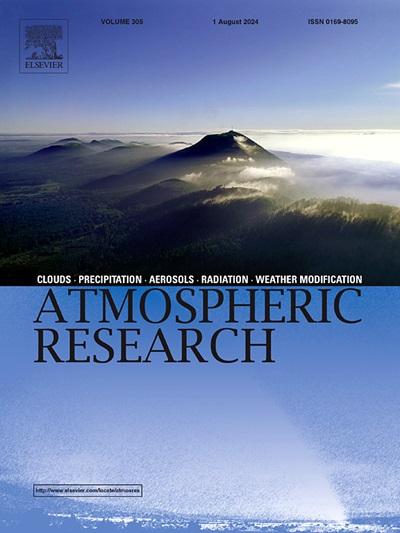Investigating the causes of cloud diurnal variation biases in global climate models using the TaiESM1
IF 4.5
2区 地球科学
Q1 METEOROLOGY & ATMOSPHERIC SCIENCES
引用次数: 0
Abstract
Global climate models (GCMs) have significantly advanced in simulating mean cloud properties, yet challenges persist in accurately capturing cloud diurnal variations (CDVs), especially over land. This study explores the underlying causes of CDV biases by leveraging the Taiwan Earth System Model version 1 (TaiESM1), satellite observations, and reanalysis data. An assessment of CMIP6 models, including TaiESM1, indicates that these models perform well in simulating high and middle clouds over land and ocean. However, low clouds exhibit the weakest correlation, highlighting ongoing difficulties in their representation. Our analysis shows that TaiESM1 underestimates the diurnal amplitude of cloud fraction over land and predicts peak cloud coverage earlier than observed. While the simulated convective cloud fractions from shallow and deep convection schemes align well with observations, the stratiform cloud fractions produced by macrophysical schemes show a phase misalignment with observed CDVs. Moreover, the diurnal variations of stratiform clouds and their associated moisture tendencies deviate notably from observations, revealing limitations in the current parameterizations for stratiform clouds.
We recommend enhancing the macrophysical and microphysical parameterization schemes to address these biases. Specifically, integrating stratiform cloud macrophysics, microphysics, and turbulent boundary layer processes within GCMs, such as incorporating the Cloud Layers Unified By Binormals framework, might improve the simulation of diurnal variations in cloud fraction over land. Moreover, shifting from bulk moisture budget approaches to models emphasizing variations in convective detrainment and subgrid vertical velocities associated with turbulent mixing will enhance the realism of stratiform cloud simulations. Implementing these adjustments is anticipated to improve the accuracy of CDV simulations in TaiESM1 and other GCMs, leading to better climate simulations.
求助全文
约1分钟内获得全文
求助全文
来源期刊

Atmospheric Research
地学-气象与大气科学
CiteScore
9.40
自引率
10.90%
发文量
460
审稿时长
47 days
期刊介绍:
The journal publishes scientific papers (research papers, review articles, letters and notes) dealing with the part of the atmosphere where meteorological events occur. Attention is given to all processes extending from the earth surface to the tropopause, but special emphasis continues to be devoted to the physics of clouds, mesoscale meteorology and air pollution, i.e. atmospheric aerosols; microphysical processes; cloud dynamics and thermodynamics; numerical simulation, climatology, climate change and weather modification.
 求助内容:
求助内容: 应助结果提醒方式:
应助结果提醒方式:


